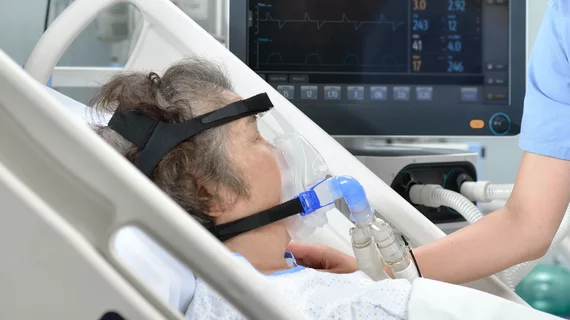Chest CT, perfusion imaging spots pulmonary embolism in 25% of hospitalized COVID patients
Pulmonary embolism was discovered in 25% of patients hospitalized with COVID-19 who underwent CT or nuclear stress testing, according to the results of a new multi-center study.
There are varying reports on the incidence of PE in patients with the novel virus, with lower estimates suggesting a 17% positive rate and other analyses pegging that figure closer to 37%. Either way, the inconsistencies make it difficult to determine who should undergo CT pulmonary angiography (CTPA) examination, experts explained in Radiology.
For insight, a team of East Coast doctors analyzed electronic medical records from 413 patients admitted across four hospitals during the start of the pandemic, sharing their findings Tuesday.
Overall, they diagnosed PE in 102 patients using CTPA or perfusion scintigraphy. Men and smokers were particularly prone to this serious condition, which, if left untreated, carries up to a 30% mortality rate.
Given their results, the providers say it may be worth performing such tests in certain COVID-19, despite inherent risks.
“Although use of CT pulmonary angiography and perfusion scintigraphy in COVID-19 can be cumbersome due to the complex logistics of transporting sick infected patients to the radiology department, there may be a benefit since we observed no excess mortality when pulmonary embolism was diagnosed and treated,” Sadjad Riyahi, MD, with Weill Cornell Medicine’s Department of Radiology, and co-authors wrote July 13.
Diving further into the results, the rate of acute pulmonary embolism was not significantly different between intensive care unit patients and individuals treated outside the ICU.
Additionally, Riyahi et al. found a D-dimer threshold of 1,600ng/mL or greater was sensitive for choosing which patients needed to undergo CTPA.
Loren H. Ketai, MD, of the University of New Mexico Health Science Center looked over the findings as well, concluding more research is required to confirm which patients are most qualified to receive CTPA exams.
Ketai, who is also President-elect of the Society of Thoracic Radiology, further pointed to the regional variations in patient demographics and various tools used to detect suspected PE as arguments for more follow-up.
“Additional knowledge will accumulate, but for now, we will have to do what we can with what we've got where we are,” he concluded in an editorial published Tuesday.
Read the full Radiology study here and the accompanying editorial here.

